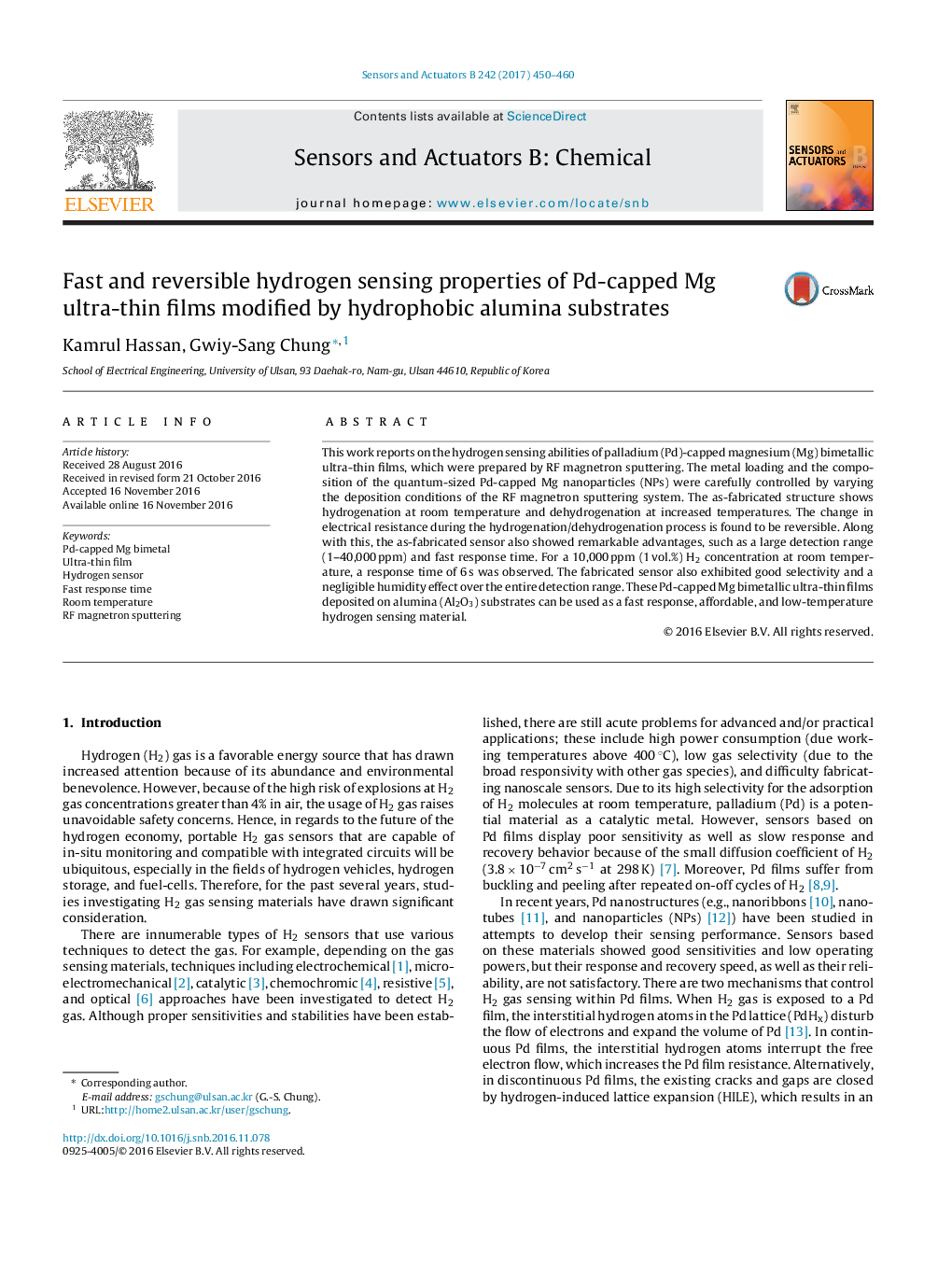| Article ID | Journal | Published Year | Pages | File Type |
|---|---|---|---|---|
| 5009703 | Sensors and Actuators B: Chemical | 2017 | 11 Pages |
â¢Quantum size Pd-capped Mg bimetallic nanoparticles were deposited on alumina substrate as an ultra-thin film manner by RF magnetron sputtering system.â¢Computational analysis of bimetallic nanoparticles/ultra-thin films for hydrogen sensing.â¢Feasibility of H2 sensing properties is investigated.â¢The mechanism for H2 response was described by diffusion pathway.
This work reports on the hydrogen sensing abilities of palladium (Pd)-capped magnesium (Mg) bimetallic ultra-thin films, which were prepared by RF magnetron sputtering. The metal loading and the composition of the quantum-sized Pd-capped Mg nanoparticles (NPs) were carefully controlled by varying the deposition conditions of the RF magnetron sputtering system. The as-fabricated structure shows hydrogenation at room temperature and dehydrogenation at increased temperatures. The change in electrical resistance during the hydrogenation/dehydrogenation process is found to be reversible. Along with this, the as-fabricated sensor also showed remarkable advantages, such as a large detection range (1-40,000Â ppm) and fast response time. For a 10,000Â ppm (1Â vol.%) H2 concentration at room temperature, a response time of 6Â s was observed. The fabricated sensor also exhibited good selectivity and a negligible humidity effect over the entire detection range. These Pd-capped Mg bimetallic ultra-thin films deposited on alumina (Al2O3) substrates can be used as a fast response, affordable, and low-temperature hydrogen sensing material.
